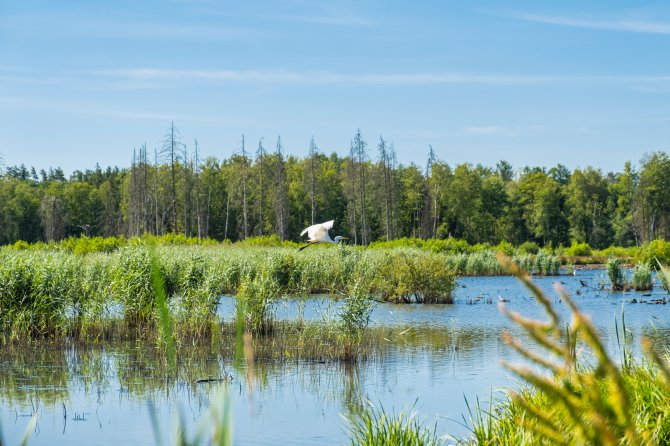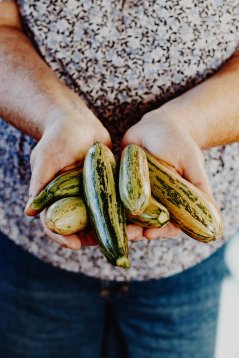
In the spotlight
The EU must make agriculture more resilient
Yannick Buitenhuis, researcher from the Public Administration and Policy group (PAP), recently published a climate opinion piece in the NRC Climateblog (June 15, 2021): The EU must make agriculture more resilient. European government leaders cannot agree on making agriculture more sustainable. According to Yannick serious consequences follow. Read the NRC article here.
The EU must make agriculture more resilient
NRC climate opinon piece by Yannick Buitenhuis
Published in NRC Climateblog June 15, 2021
Late May saw renewed, intensive negotiations between the European Commission, the European Parliament and Europe's agricultural ministers regarding the post-2023 Common Agricultural Policy (CAP). In spite of four days of negotiations, the European institutions failed to reach a compromise on the extent of sustainability measures.
Negotiations will therefore be resumed in June. The European Commission had placed sustainability and the assurance of a resilient European agricultural system high on the agenda, but nevertheless it appears that this round of CAP reforms will see a dilution of sustainability ambitions.
This will be a missed opportunity, because the long-term resilience of European agricultural systems is coming under pressure due to three urgent problems: climate change and extreme weather, biodiversity loss, and increased environmental pressures.
The concept of resilience draws on the natural sciences and is defined as the capacity of systems to deal with disturbance without undergoing permanent change. A resilient agricultural system is therefore one that is capable of tolerating a brief shock before returning to business as usual.

Less fertilizer
Climate change, biodiversity loss and agricultural environmental pressure each call for a different type of resilience. Climate change, for example, forces farmers to adapt their agricultural practices in order to continue producing healthy food. Protecting biodiversity in rural areas will require farmers to make less intensive use of (artificial) fertilisers and crop protection agents in order to retain an equilibrium with the natural environment. Or if it appears that constant monocropping has exhausted the soil’s nutrients, it might be wiser to practice mixed cropping before it’s too late.
Resilience is therefore actually more than simply being robust enough to absorb short-term shocks. It also requires the capacity to adapt, or even to transform an agricultural system.
Climate change, biodiversity loss and the pressure put onto the environment by agriculture all demand a fundamentally different approach to resilience within the Common Agricultural Policy
A range of different policy measures are needed to support these three types of resilience, but in the past the Common Agricultural Policy has mainly focused on supporting the robustness of agriculture. Large budgets were made available for direct income support, and financial safety nets were put in place for acute crisis situations. The current CAP reform negotiations appear to be barely deviating from this approach.
Dividing money
Once again, discussions in Brussels are concentrating on how the money (almost 400 billion euros) will be divided, and on how much of that money actually needs to go towards making agriculture more environmentally sustainable. There's very little discussion as to whether these measures are in fact an appropriate way of supporting the long-term resilience of agricultural systems.

As a result, the Common Agricultural Policy's support of agricultural resilience will largely take the familiar form of direct income support. This income support may well provide a short-term financial buffer for farmers, but at the same time it provides little incentive for them to change how they farm. Until 2027, most of the direct income support will remain linked to the number of hectares owned by a farmer. Little support is anticipated for innovative, small-scale or organic agriculture.
The link to hectares farmed also leads to an unfair allocation of income support, with 80 percent of direct income support being given to just 20 percent of European farmers. And let’s not even get into all the scandals and fraud cases. Long-term resilience would be better served by income support being increasingly linked to innovations or to the achievement of sustainability outcomes. This would incentivise adaptation and more environmentally sustainability practices, while also giving farmers payment for their services to nature, the climate and landscape.
Animal welfare
New eco-schemes have been proposed for this, which would provide farmers with income support if they adapt their agricultural practices to make a positive contribution to the environment, climate, biodiversity and animal welfare. This form of compensation has the potential to contribute to strengthening the long-term resilience of European agricultural systems. Member states can define the eco-schemes themselves through their National Strategic Plan. This gives them options for adapting policy to the national or local context. An intensive arable farming business in the Netherlands will need different policy options for adapting and becoming more environmentally sustainable compared to an extensive sheep farmer in Spain.
But it’s precisely these eco-schemes that have become the sticking point in the latest CAP negotiations. European agricultural ministers want to prevent more than 20 percent of the CAP money being allocated to eco-schemes, while the European parliament wants it to be a minimum of 30 percent.
Climate change, biodiversity loss and the pressure put onto the environment by agriculture all demand a fundamentally different approach to resilience within the Common Agricultural Policy. It’s high time European agricultural ministers understood this.